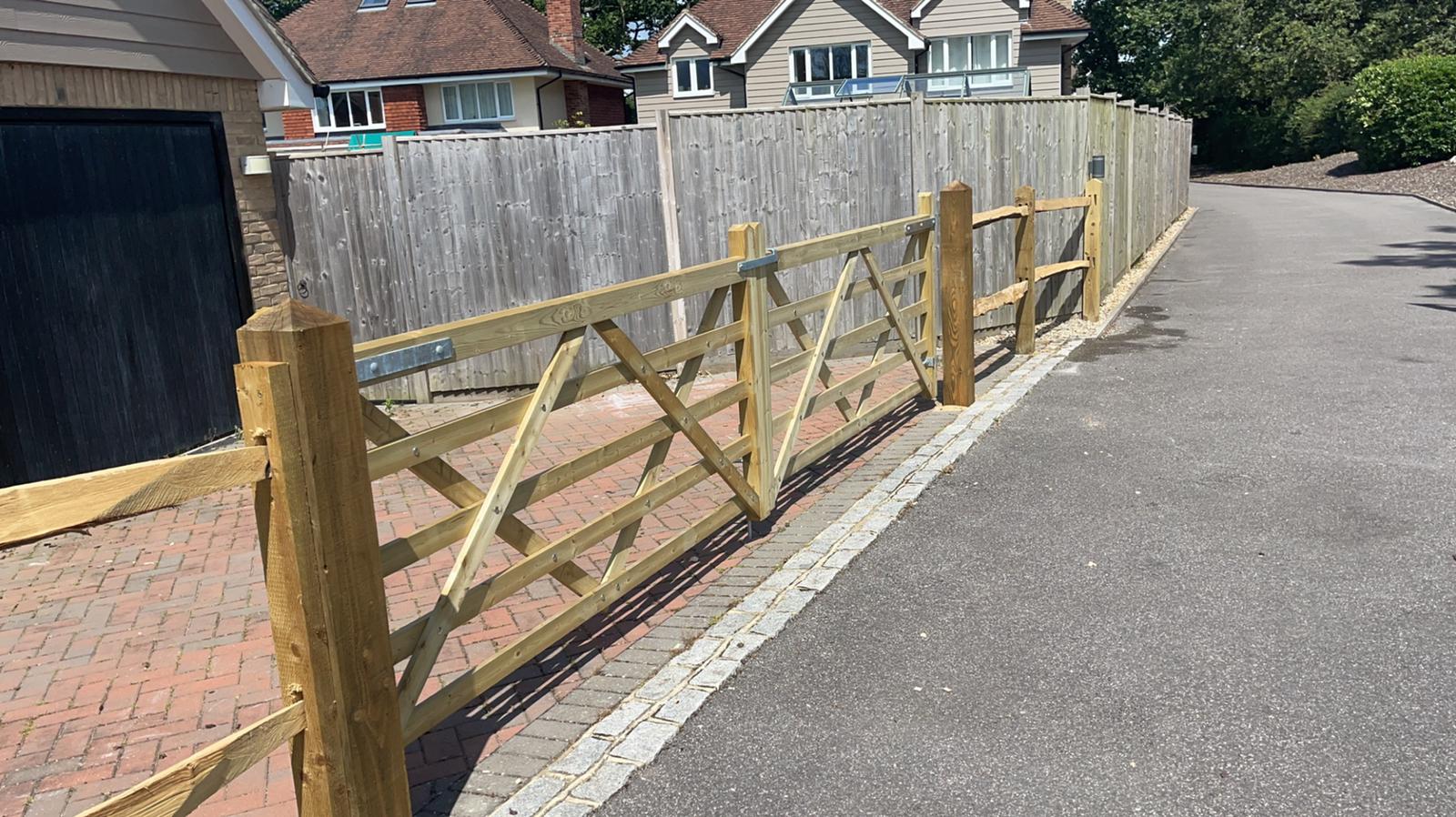

Are you considering post and rail fencing for your property? This traditional fencing solution is both aesthetically pleasing and highly functional, providing an excellent way to demarcate your land while enhancing its visual appeal.
Post and rail fencing consists of upright posts with horizontal rails. This style of fencing is particularly popular in rural and suburban settings.
When selecting materials for your post and rail fencing, a myriad of factors must be considered. Durability, appearance, and cost are paramount considerations, along with how well the materials harmonize with the surrounding landscape.
Softwood, such as pine or spruce, is a popular choice due to its affordability and ease of treatment. On the other hand, hardwoods like oak tend to provide superior longevity and robustness. In all cases, the selection of the right materials will significantly impact the overall lifespan and maintenance needs of your fencing.
Softwood options, including pine and spruce, are highly favoured for their cost-effectiveness and ease of working. Treated softwood can provide reasonable durability.
For enhanced longevity and strength, hardwood species such as oak are excellent choices. These woods require less maintenance and resist environmental wear better.
Oak’s natural resistance to decay ensures exceedingly long-lasting post and rail fencing.
Pressure-treated wood: To prolong the usability of both hardwood and softwood, consider selecting pressure-treated options. This process infuses the wood with preservatives, further enhancing its durability and resistance to pests and rot.
When investing in post and rail fencing, assessing durability is a pivotal aspect homeowners must address.
Softwoods, despite their affordability, often require frequent maintenance to achieve reasonable longevity and structural integrity.
Hardwoods such as oak inherently possess remarkable durability, thereby justifying the higher initial investment through reduced long-term maintenance costs.
Start by marking the desired location of the fence with stakes and string lines, ensuring a straight alignment.
Once the layout is determined, dig post holes at regular intervals (typically 1.8 to 2.4 metres apart) to support the structural integrity of the fence. Use a post-hole digger or auger for accurate and consistent depths.
After placing the posts into the holes, fill around them with concrete or gravel, ensuring they remain plumb and level until the mixture sets.
First, conduct a comprehensive site survey to identify any slopes or undulations.
Carefully remove any vegetation, rocks, or debris from the designated area to ensure unhindered post placement.
Mark the precise locations for the posts using stakes and string lines, confirming straight and accurate lines.
For enhanced accuracy, consider using a laser level or transit level to verify exact post positioning.
Lastly, tamp the soil at the base of each post hole to prevent future settling. Consistent depth is crucial for ensuring uniformity and stability across the fence line.
Positioning the posts correctly is fundamental to the integrity and longevity of your post and rail fence.
Begin by digging the post holes to a depth of at least one-third of the total post height. This ensures adequate support.
Each hole should be sufficient in diameter to allow the post to stand upright while providing enough space for backfill materials.
Place the posts into the holes, ensuring they are vertically plumb using a spirit level. Temporary braces can hold the posts steady.
Backfill with a concrete mix or gravel, tamping down firmly to secure the posts in place. Ensure posts remain plumb and level until the mixture sets.
Regular inspections are crucial to maintaining the integrity of your post and rail fence. Look for signs of rot, insect damage, and loose connections, and address these issues promptly.
Periodic treatments with wood preservatives or stains can prolong the lifespan of your fence, ensuring it remains both functional and aesthetically pleasing.
Regular inspections safeguard your fence’s durability.
Conduct bi-annual examinations to spot early signs of deterioration. Confirm that posts remain firmly embedded in the ground, rails are securely attached, and any signs of weathering or decay are promptly addressed. This proactive approach helps you avoid costly repairs while extending your fence’s lifespan.
Inspect for pest infestation, as insects like termites can cause substantial damage if left unchecked. Consider employing a professional pest control service if an infestation is detected, to ensure comprehensive treatment and prevention.
Utilize moisture meters to ascertain the moisture content of the wooden posts and rails. Excessive moisture can indicate potential rot or fungal growth, necessitating immediate action to prevent extensive damage.
To enhance the durability and longevity of your post and rail fencing, several treatment options are available, each with specific benefits applicable to different scenarios.
Pressure treatment saturates the wood with preservatives under high pressure, making it resistant to decay and insects.
You might also consider creosote treatment, particularly for larger-scale installations, as it offers superior protection against moisture, rot, and pests.
Alternatively, oil-based treatments such as linseed oil provide a natural finish that protects while retaining the wood’s organic appearance. Regular reapplication, typically every few years, ensures ongoing effectiveness. Selecting the right treatment depends on your specific requirements and local environmental conditions.
Regarding the expense associated with post and rail fencing, several factors can significantly influence costs. Material selection, timber treatment, and fence height are key elements that contribute to the overall expenditure.
In addition to materials and treatments, labour costs play a significant role. Prices can vary by region and contractor experience. It’s prudent to obtain multiple quotes to ensure competitive pricing. A detailed budget should also include maintenance and potential repairs over the fence’s lifespan, ensuring comprehensive financial planning.
Timber selection, treatment, and sourcing play pivotal roles in determining the upfront expense. Pressure-treated timber offers excellent resilience, whereas untreated timber may be less costly but necessitates regular upkeep.
Professional installation services should be considered to maximise the fence’s structural integrity. Although slightly more expensive, professional installation guarantees precision, alignment, and adherence to safety standards. Furthermore, consider future-proofing in your initial budget to accommodate any unforeseen repairs or enhancements.
Investing in post and rail fencing offers substantial long-term savings, surpassing cheaper, short-lived alternatives.
A high-quality fence requires less frequent repairs.
Due to its durability, fewer materials are needed for long-term maintenance.
Regular upkeep, such as annual inspections and minor repairs, prolongs the fence’s lifespan.